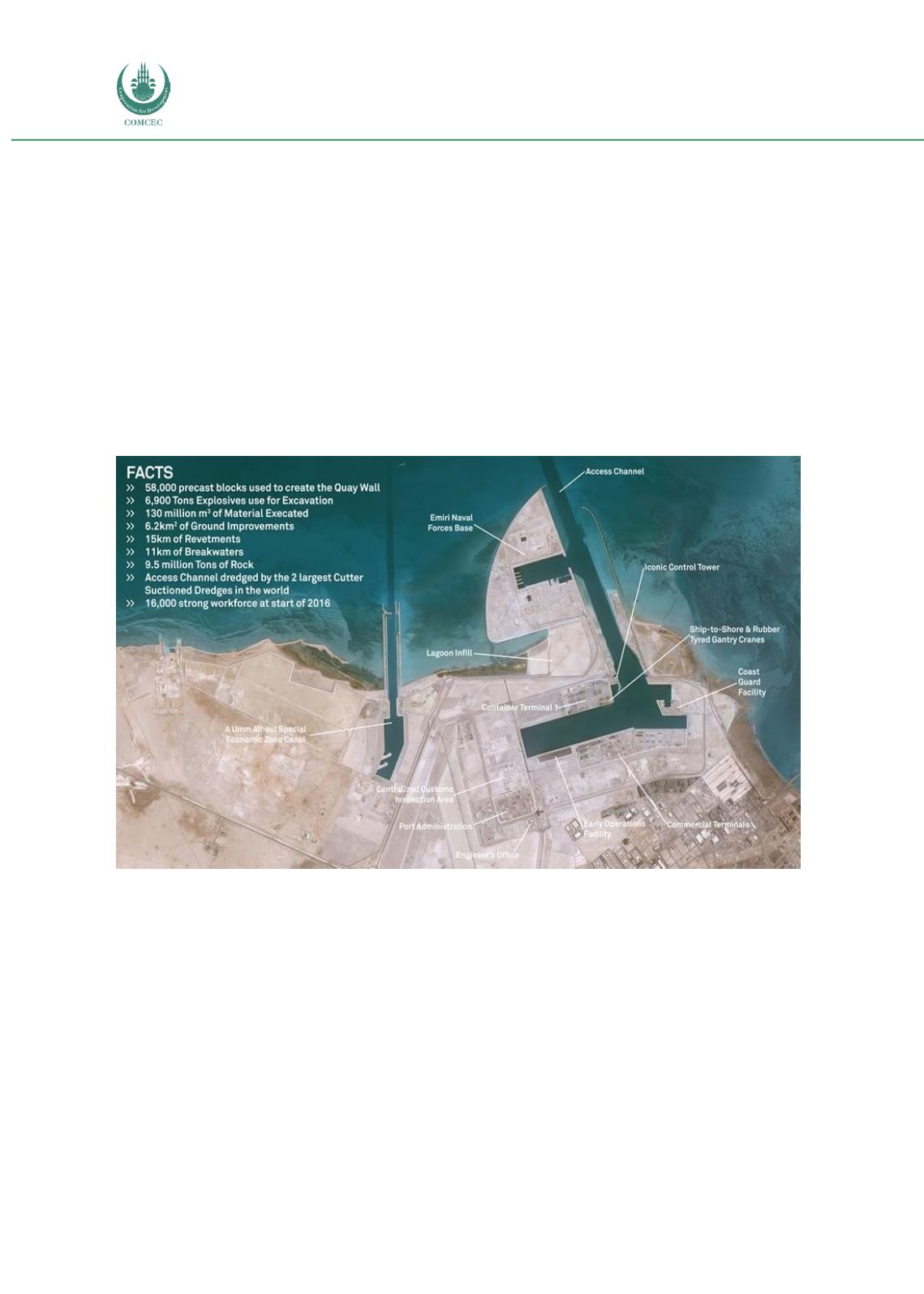

Planning of National Transport Infrastructure
In the Islamic Countries
120
Doha Metro (US$ 36 billion) covering a total distance of 241 km with 106 stations (see
Figure 33 ). Three out of four lines will open by 2020, with expected 640,000 passengers per
day per 2021. The fourth line (Blue) is expected to open per 2026.
Hamad New Port (US$ 7.5 billion) with a capacity of 7.5 million TEU per annum, opened in
2015, and completed per 2020 (se
e Figure 34 ).
Highway project (US$ 11 billion), 30 main roads, starching 1000 kilometres of road, 360
brides, 240 intersections, and including the New Orbital Expressway (US$ 148 million)
from Al Khor in the North to Mesaieed in the South
Long Distance Rail, with a freight focus, connecting the Port and Mesaieed with the Gulf
Cooperation Council countries
Lusail Tram, 19-kilometre tram, with 25 stations, connecting Lusail with Doha
Figure 34: Hamad New Port
Source: Hamad Port Project
The metro fits in the approach that Qatar follows, namely Transit Oriented Development (TOD).
Zaina (2016) defines TOD to be “a mixed use commercial and residential area designed to
maximise access to public transport and to encourage transit ridership”. TOD reflects the
integrated approach between land development and planning of transport infrastructure. They
are a key element in stimulating public transport. Many of the developments around the stations
of the metro line project are TOD. The heterogeneity in population provides Qatar with a traffic
related communication challenge: traffic signs are in Arabic and in English. But for large part of
the population it is still a problem to understand the meaning of the traffic signs. The traffic
police is making lot of efforts to make residents of Qatar understand and follow the Traffic signs
and go by it since the people come from lot of different countries
















